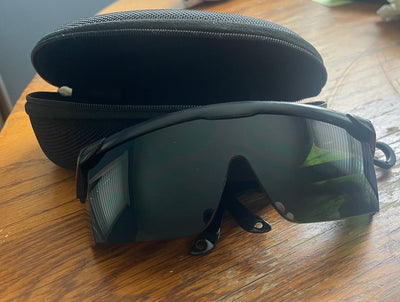SMALLER FOALS AND SHORTER GESTATION NOTED AFTER BLUE-LIGHT THERAPY DURING PREGNANCY
SMALLER FOALS AND SHORTER GESTATION NOTED AFTER BLUE-LIGHT THERAPY DURING PREGNANCY
Shorter gestation and smaller foals with shorter hair were noted in mares who were treated with blue light in a study involving warmblood mares in Germany.
Mares were exposed to a long day photoperiod administered by way of a light mask delivering blue LED light to one eye from mid-December onwards foaled earlier than the same mares in their control pregnancies. Foals born to mares exposed to blue LED light were smaller at birth and had a markedly shorter hair coat but did not differ in weight from foals born from control pregnancies.
The results of this study support previous findings that suggest photoperiod influences gestation length, whether that is provided by the natural changes in seasonal daylength or artificial lighting programs.
Equine gestation length is in part genetically determined and individual mares will repeatedly carry their foal for specific durations in multiple consecutive years. Blue LED light allows individual targeting of mares known to have a longer than average duration of gestation.
Furthermore, in mares that conceived relatively late in the previous year´s breeding season, a longer than average gestation may result in delayed re-breeding. Whereas classical light programs affect all mares in a group or stable, blue light-emitting diodes will allow targeting those mares individually.
Although the study could not determine how the equine fetus is able to perceive changes in external light, the markedly shorter hair in foals born to light-treated mares clearly demonstrates that external light effects do reach the fetus.
Foals born to mares exposed to blue LED light were slightly smaller than control foals but there were no differences in foal birth weights between groups. Whereas equine fetal weight gain increases to a maximum near term and is determined mainly by developing muscles and soft tissues, growth in length of the bones is maximal in months 8 and 9 of gestation. Therefore, the height differences between foals born from blue LED light-treated and control pregnancies are most likely caused by effects stimulated at the beginning or throughout the phase when mares were exposed to blue LED light and not caused by the shorter gestation.
Birthweight has an ongoing influence on bodyweight and performance in Thoroughbred racehorses. Foals with higher birthweights are heavier throughout life and have a better racing performance compared to horses born with a low birthweight. A similar birthweight in foals from blue LED light and control pregnancies suggests no effects of treatment on the foals’ future performance.
In conclusion, foaling can be advanced with head-worn masks emitting blue LED light to a single eye without negative effects on foal maturity. Blue LED light resulted in the birth of slightly smaller foals compared to controls. Furthermore, foals born to blue LED light-treated mares had a shorter hair coat than control foals, demonstrating that artificial light directed at the mare does reach its fetus and accelerates fetal maturation.
Reference:
Effects of blue monochromatic light directed at one eye of pregnant horse mares on gestation, parturition and foal maturity. A Lutzer, C Nagel, B A Murphy, J Aurich, M Wulf, C Gautier, Christine Aurich. Domest Anim Endocrinol (2022)78:106675. https:doi.org/10.1016/j.domaniend.2021.106675






